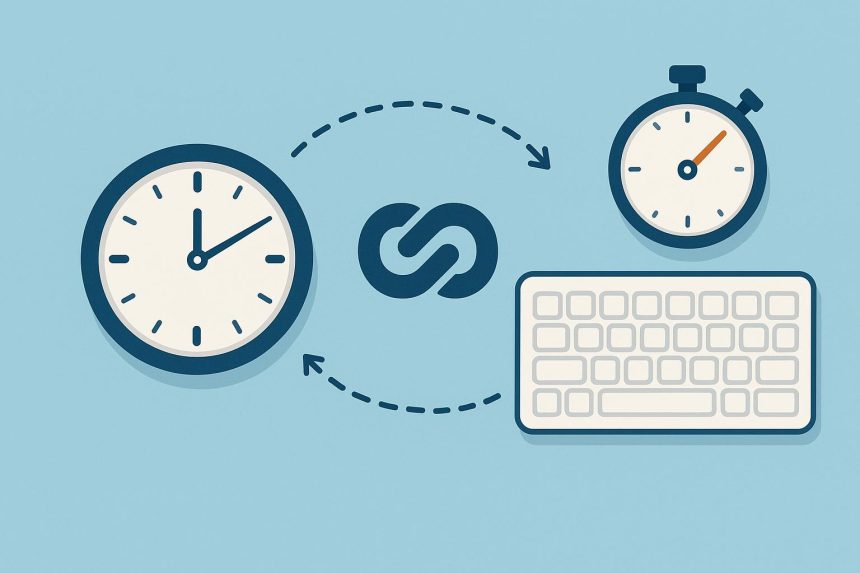In a world filled with constant notifications, meetings, and to-do lists, most people crave one thing: more time. We chase productivity hacks, install focus apps, and fill our planners, yet the truth is much simpler. Understanding where your time goes and how efficiently you type can completely transform how you live and work.
This article explores how integrating time-tracking and typing tests can sharpen your focus, streamline your workflow, and help you live more intentionally.
Small Tools, Big Shifts: 3 Digital Essentials That Make a Difference
Before diving deeper, let’s begin with a few simple but powerful digital tools that can reshape how you approach each day. Think of them as your personal efficiency kit, designed to reveal hidden opportunities in your routine.
Start by tracking your time with Time.now. This tool turns your schedule into visual insights so you can see exactly where your hours go. Once you recognize patterns of distraction or productivity, you can focus your energy where it matters most.
Next, measure your typing efficiency using a free typing test. Your typing speed affects every part of your digital life, from replying to emails to turning ideas into finished writing. Even a small increase in speed can save you hours every week.
Finally, refine your writing clarity with wordcounter. This tool does more than count words. It evaluates sentence length, readability, and pacing so you can create writing that is concise and engaging.
Each tool provides value in a different way, working together to help you track progress, improve skill, and stay consistent.
Why Tracking Time Matters More Than You Think
If you often end the day wondering where the time went, you are not alone. Time-tracking is not about strict self-management. It is about awareness and self-honesty. According to research summarized by NIH, people who monitor their behavior regularly are more likely to achieve meaningful improvement because they can clearly see the patterns that drive their actions.
When you know how much time you spend on specific tasks such as email, planning, or creative work, you can make better decisions about how to use your energy. Awareness leads to clarity, and clarity gives you control over your schedule.
TL;DR:
Time-tracking increases awareness of how you spend your hours. By identifying productive and unproductive habits, you can prioritize effectively, reduce wasted effort, and make consistent progress toward long-term goals.
Typing Tests: The Hidden Key to Faster Thinking
Typing speed is not only a measure of technical skill. It is also a reflection of how smoothly your thoughts translate into words. When typing becomes automatic, your brain stays focused on ideas rather than mechanics, allowing you to think and write with greater flow.
Writers, students, and professionals can all benefit from taking typing tests regularly to measure progress. Even a 10-word-per-minute improvement can save more than an hour per week for someone who types throughout the day.
Tips to Improve Typing Efficiency
- Begin each workday with short warm-up exercises.
- Focus on accuracy before increasing speed.
- Use an ergonomic keyboard and proper posture to prevent strain.
- Challenge yourself with a weekly timed typing session.
Writing with Awareness: The Power of Word Counting
Writing well requires more than filling a page with text. It involves pacing, structure, and clear communication. A word counter tool such as WordCountTool provides measurable feedback on word density, sentence variation, and readability levels. It teaches you how to write with precision while maintaining a natural tone.
For professionals, this means clearer reports and better communication. For students, it builds discipline and structure. For writers, it offers an easy way to maintain flow and readability.
Turning Tools into Habits
The real transformation happens when productivity tools evolve into personal habits. When time-tracking, typing tests, and word analysis become part of your daily rhythm, you develop a form of self-awareness that drives lasting improvement.
Do not just collect data. Reflect on it. Notice when your focus peaks or drops, when your typing feels natural, and when distractions appear most often. Over time, you will uncover patterns that help you design a schedule that truly fits your strengths.
The Science of Focus and Flow
Psychologists describe “flow” as a state of deep engagement where time seems to disappear. You become fully absorbed in what you are doing and perform at your best. Regular time-tracking and typing practice both make this state easier to reach. When your work habits are structured and your typing is effortless, your attention naturally deepens.
Small improvements can create major change. A better workflow, faster typing, and conscious time use combine to give you back what everyone wants most: a sense of control over your time.
FAQs
What’s the benefit of tracking your time daily?
Tracking your time helps you understand how you actually use your hours. This awareness makes it easier to reduce distractions and focus on tasks that produce real value.
How can a typing test improve productivity?
Typing tests reveal weak points in your accuracy or speed. By practicing consistently, you save time on repetitive tasks and make your work more efficient.
What are the best free tools to manage writing and focus?
Tools like Time.now, TypingTest.now, and WordCountTool create balance between tracking, learning, and improving. Each one strengthens a different aspect of productivity.
How do writers use word counters effectively?
Writers use word counters to maintain structure, hit specific goals, and evaluate readability. It helps them communicate clearly while keeping their message engaging.
Lynn Martelli is an editor at Readability. She received her MFA in Creative Writing from Antioch University and has worked as an editor for over 10 years. Lynn has edited a wide variety of books, including fiction, non-fiction, memoirs, and more. In her free time, Lynn enjoys reading, writing, and spending time with her family and friends.















